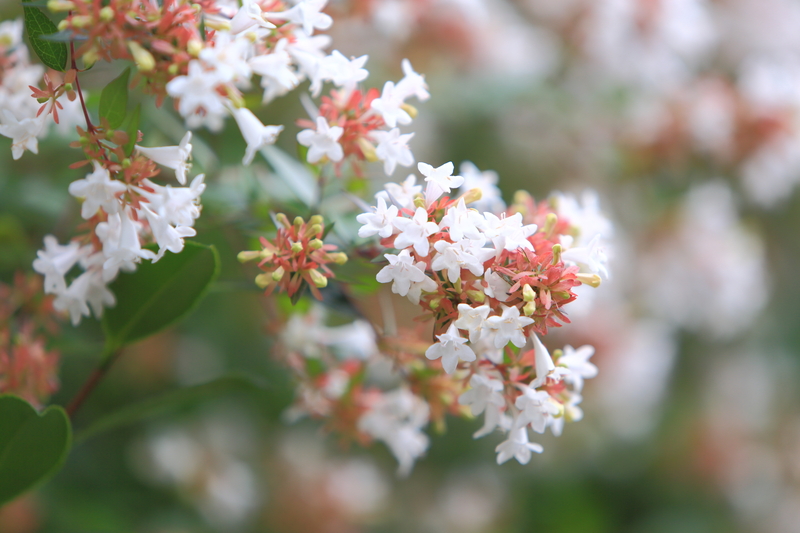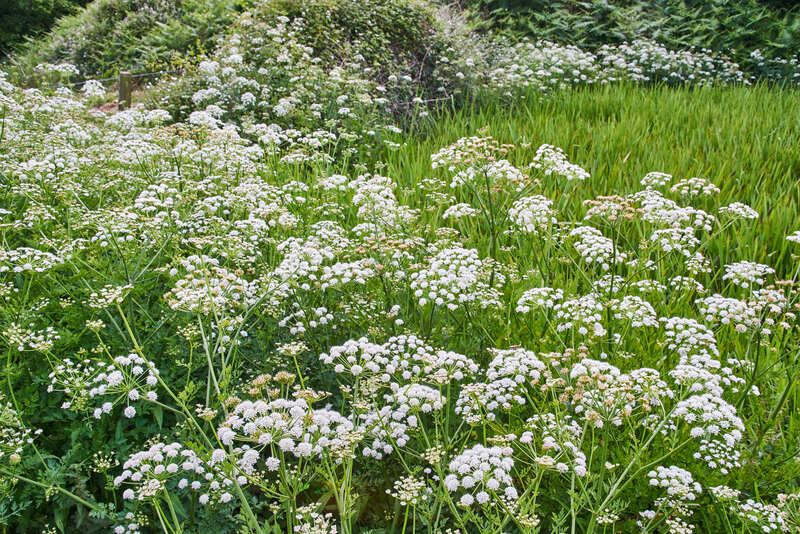Winter-Proof Your Garden Plants With These Tips
Posted on 23/09/2025
Winter-Proof Your Garden Plants With These Tips
As the cold winds begin to blow and temperatures start to dip, every gardener faces the annual challenge: how to winterize garden plants effectively. Whether you're a seasoned green thumb or a gardening novice, protecting your beloved botanical treasures from frosty conditions is crucial. In this comprehensive guide, learn how to winter-proof your garden plants with actionable tips, clever hacks, and vital know-how to keep your garden thriving through winter's harshest months.

Why Winterizing Your Garden Plants Is Important
*Why should you bother with winter protection for plants?* Frost, freeze, and fluctuating winter temperatures can severely damage or even kill unprepared garden plants. Plants not only slow down during winter--they face dehydration, root damage, and dieback that can hamper spring regrowth. Winter-proofing garden plants protects your investment in time, energy, and money, ensures healthier spring growth, and keeps your garden beautiful year after year.
Know Your Local Climate and Zone
Before diving in, get familiar with your USDA hardiness zone or local climate patterns. These determine the coldest temperatures your garden is expected to endure and help you choose suitable protection methods. Check your zone through resources like the USDA Plant Hardiness Zone Map and plan accordingly.
- Zone 3 or lower: Prepare for harsh, prolonged winters with extensive plant protection.
- Zones 4-6: Expect mild to moderate winter, but early and late frosts are possible.
- Zones 7 and higher: Focus on protecting sensitive or subtropical species.
General Tips to Winter-Proof Your Garden Plants
- Start prepping early: It's best to start winterizing garden plants before the first hard frost hits.
- Don't over-fertilize late in the season: This encourages tender new growth, which is susceptible to frost.
- Reduce watering: As plants enter dormancy, they need less moisture. Overwatering can cause root rot in cold soil.
- Mulch generously: A thick mulch layer acts as insulation, keeping soil temperatures steady and protecting roots from freeze-thaw cycles.
1. Mulching: Your First Line of Defense
*Mulch is the unsung hero of winter garden protection.* Applying 2-4 inches of organic mulch--such as shredded leaves, straw, pine needles, or wood chips--insulates the soil, retains moisture, and keeps temperatures more consistent.
- For perennials: Wait until the ground freezes before applying mulch to avoid rodents settling in.
- For bulbs: Cover newly planted bulbs with mulch to prevent frost heaving.
- For shrubs and small trees: Create a mulch "donut" ring, leaving a gap at the trunk to prevent rot.
2. Watering Wisely Before the Deep Freeze
*Slightly moist soil retains heat better than dry soil.* Give your garden a deep irrigation before the ground freezes. Well-hydrated roots are less prone to freeze damage. However, avoid waterlogged soil--roots can suffocate or rot if left in standing water during winter.
3. Shield Your Plants With Covers
Using physical barriers is a classic and essential method to protect plants from frost and ice damage.
- Burlap: Wrap tender shrubs and young trees with burlap to shield them from icy winds and animal browsing.
- Frost cloths and garden fleece: Lightweight, breathable fabrics protect both annuals and perennials from frost while allowing light and moisture through.
- Plastic domes or cold frames: Best for delicate seedlings and winter veggies.
- Cloches: Bell-shaped covers ideal for individual plants or herbs.
*Secure covers in place with rocks or stakes and remove covers on sunny days to avoid overheating plants.*
4. Move Containers and Pots Indoors
Potted plants face greater risks in winter because their roots aren't insulated as deeply as those in the ground. Take these steps:
- Bring tender container plants indoors--especially tropicals and houseplants that spend summer outside.
- For hardy perennials in pots, cluster pots together in a sheltered spot, wrap them in bubble wrap or burlap, and elevate off cold ground.
- Check for pests before moving plants inside to avoid inviting insects into your home.
5. Prune and Trim Strategically
*Cutting back can help, but timing is everything.*
- For most perennials: Wait to prune after dormancy begins, usually late fall, and leave some stalks for wildlife and to prevent rot in the crown.
- For trees and shrubs: Remove dead, diseased, or crossing branches now, but delay major pruning until late winter or early spring to avoid stimulating new growth.
6. Wrap Young Trees--to Prevent Winter Sunscald and Animal Damage
Thin-barked trees, especially fruit trees and young saplings, are susceptible to *sunscald* in winter. Bright sunny days cause trunk temperatures to spike, followed by nighttime freezing--a recipe for cracked, damaged bark.
- Use tree wrap or spiral guards: Start at the base and overlap as you work upward.
- Install protective collars: Metal or plastic collars also discourage rabbits and rodents from chewing on the bark.
Special Strategies for Different Plant Types
Winter-Proofing Perennial Flowers
- Deadhead spent buds: Remove seed heads to reduce energy expenditure.
- Cut back spent foliage only after it has died back naturally.
- Mulch heavily with shredded leaves or straw for added root protection.
Protecting Roses in Winter
- Stop fertilizing in late summer: Encourage hardening off before frosts.
- Prune lightly after first frost: To prevent damage from wind and snow.
- Mound soil over crown: 8-12 inches of soil at the base can prevent freeze damage.
- Cover with burlap or cones: Add extra insulation for hybrid teas and tender varieties.
Safeguarding Trees and Shrubs
- Water well: Deeply water before ground freezes.
- Mulch wide and deep: At least 3 feet diameter and 3 inches deep.
- Wrap exposed trunks: To reduce risk of sunscald.
- Tie branches gently: To avoid snow and ice breakage in evergreens.
Winterizing Vegetable Gardens
- Harvest all remaining crops: Remove or compost spent plants.
- Mulch winter crops: Insulate overwintering vegetables like garlic, carrots, or kale with thick mulch.
- Cover beds: Use floating row covers or cold frames for extended harvests.
- Prepare soil: Add compost or manure, then cover with a layer of mulch or plastic to protect beds until spring.
Special Care for Container Plants
- Group and insulate: Cluster pots close to a wall for warmth.
- Remove saucers: Prevent excess water from freezing at the bottom.
- Use frost-proof pots: Terracotta and ceramic can crack if wet and frozen--consider switching to plastic or fiberglass for winter.
Eco-Friendly Winter Plant Protection Tips
It's possible to winter-proof your garden while minimizing environmental impact.
- Use biodegradable mulches: Leaves, straw, and grass clippings break down naturally, improving soil health.
- Repurpose materials: Old bed sheets, blankets, or burlap sacks make excellent frost covers.
- Avoid rock salt: Use sand or sawdust instead to avoid soil and plant damage.
- Encourage beneficial wildlife: Leave some seed heads and stems for birds and insects; they help control pests come spring.
Sneaky Hazards to Avoid When Winterizing Garden Plants
- Leaving covers on too long: On mild, sunny winter days, covers can overheat plants. Remove during the day and replace at night.
- Using impermeable plastics: Plastic sheets trap moisture, increasing rot risk. Only use breathable materials for covers.
- Stacking mulch against trunks: This can lead to bark rot and invite pests. *Always leave a small space around stems and trunks.*
Planning Ahead: Choose Winter-Hardy Plants for Future-Proof Gardens
If you're looking for a more hands-off approach to garden winterization, consider planting native and cold-hardy varieties. These plants are naturally equipped to survive your region's winter conditions and provide beautiful, resilient gardens year-round.
Examples of Tough, Cold-Hardy Plants
- Perennials: Hosta, Daylily, Echinacea, Russian Sage
- Shrubs: Boxwood, Hydrangea, Spirea, Forsythia
- Trees: Red Maple, Birch, Blue Spruce, Crabapple
- Groundcovers: Creeping Jenny, Ajuga, English Ivy
How to Recover Winter-Damaged Plants
Accidents happen--even with the best efforts, you may find some plants worse for wear after a tough winter. Early spring is a time for garden recovery and renewal.
- Wait before pruning: Some plants may appear dead but will sprout from healthy roots once warmth returns.
- Remove blackened or mushy material: This prevents mold and disease.
- Fertilize moderately: Once new growth emerges, offer a gentle feeding to help recovery.

Frequently Asked Questions About Winter-Proofing Garden Plants
Q: When should I start winterizing my garden?
Begin preparations in late autumn, before the first hard frost. Timing may vary based on your climate zone--check local frost dates for accuracy.
Q: How do I protect my garden from unexpected late or early frosts?
Keep frost cloths or old blankets on hand for quick covers. Water soil thoroughly before a predicted frost; moist earth holds heat longer.
Q: Can composting help garden plants in winter?
Yes! A layer of compost acts as nutritive mulch. Apply before mulching to insulate and feed roots through winter.
Q: What about garden pests in winter?
Voles, rabbits, and mice may take refuge in mulch. Compact mulch after snowfall and use protective guards on tree trunks to deter gnawing.
Conclusion: Give Your Plants the Winter Advantage!
With cold weather looming, now is the perfect time to winter-proof your garden using proven tips and strategies. *A little preparation goes a long way*: from careful mulching and strategic wrapping to choosing the right plants for your conditions, you can keep your garden alive, healthy, and ready to burst forth when spring arrives.
Don't let bitter chills and icy storms destroy your hard work. *Instead, embrace winter as another chapter in your garden's story.* With these practical tips on winterizing garden plants and protecting garden plants in cold weather, your outdoor oasis will survive--and thrive--season after season.

